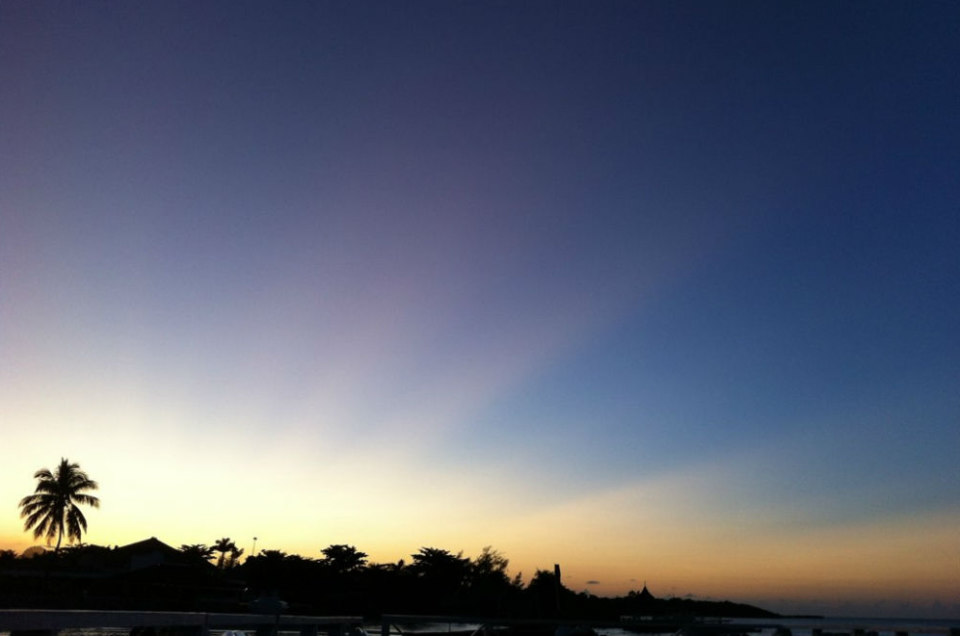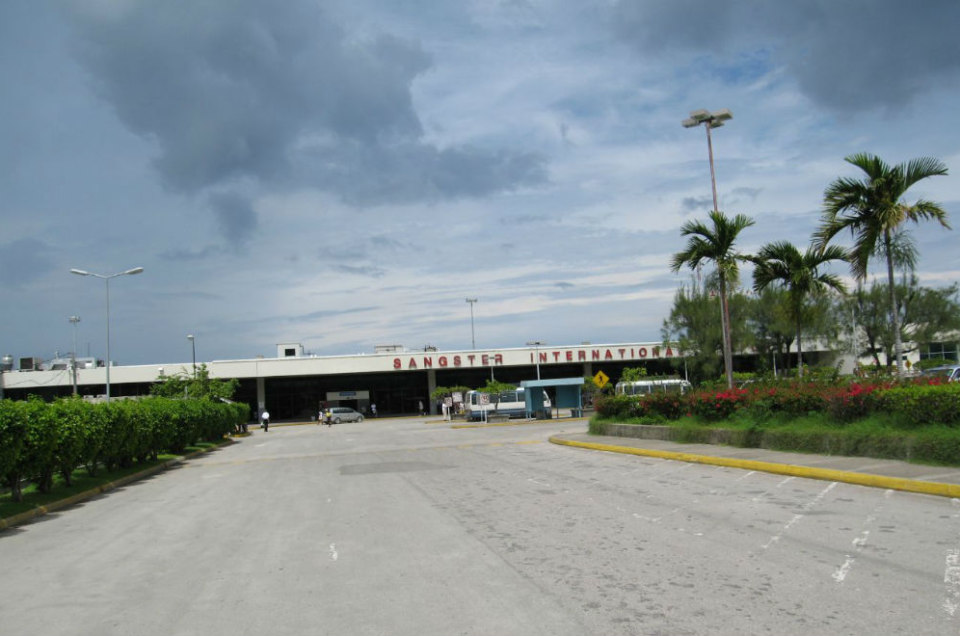Winter in Chicago was approaching and we were on the lookout for a beach getaway. Location wasn’t particularly important, and our schedule was wide open, so we were more focused on getting a good deal than anything tropical. That was our first mistake. The second was booking week-long a trip for two for about $2,000 (total, including meals, travel, accommodations) to an all-inclusive resort in Runaway Bay, Jamaica.
Neither Neil nor I had ever been to Jamaica, but we’d both grown up seeing the same ads that equated the Caribbean island to paradise. We’d also never been to an all-inclusive resort. And, while we knew it wasn’t an ideal fit for our active and adventurous lifestyles, we figured we’re a relatively young and adaptable couple, we could have fun anywhere, as long as we’re together.
We didn’t think twice about the fact that everything in the last two paragraphs sounds like a set-up to a cliché horror movie.
From the moment we arrive at Sangster InternationalAirport in Montego Bay, something seems different about this place. Glancing out the window at the baggage handlers, my eyes fall on the woman who seems to be in charge of it all. Wearing her orange neon vest, she’s patting down everyone before they touch the baggage. I grip my carryon bag, suddenly relieved I didn’t check anything.
We walk through the airport, pass seamlessly through customs, and find the ground transportation area. Most tourists are staying at all-inclusive hotels, and so all of the resorts have their own check-in in the same area. But all are not created equal. We see signs for Sandals, Couples Resorts, Ritz-Carlton and other familiar names, and notice that their check ins look like plush lounges, with seating, air conditioning and order. Then there’s our hotel. It’s where the long line of frustrated people stand.
Within an hour, we’re loaded onto a bus that drives a group of us to the hotels in Runaway Bay. Gazing out the window, you get a better view of the real Jamaica than any of us will get all week at our all inclusive resorts. To the left side of the bus is the gorgeous Caribbean, interrupted only by grassy areas, small cliffs and sprawling, compound-like resorts. The right side is a stark contrast. This is where the residents live. It’s full of a broad mix of abandoned concrete houses, wooden shanties, and large homes, where, according the bus driver, lawyers, doctors and “successful pharmaceutical salesmen” live.
The first stop is at Breezes. We pull into a large roundabout and get an up-close view. More expensive than our hotel, this looks like a giant white strip mall that goes on for a couple of blocks. The palatial resort sits right on a large strip of beach. We admire the open-air lobby as the bus drops off a handful of passengers from a roundabout.
Our stop is next. There’s no roundabout here. Only a security gate in front of the Velveeta-colored wall separates the resort from the street. In front of us are a series of bungalow-style buildings straight out of the 70s. I wonder how long it would take the bus driver to notice if we just stayed on the bus.
We check in and things start to look up. Our room is actually quite nice. We have a patio and an amazing view of the Caribbean. You can actually look at the ocean from the shower. We quickly change into our swimsuits and head down, looking forward to floating in the crystal blue waters.
But there’s no real floating in these waters. The small hotel beach is divided into two sides. On one side, the algae and ocean plants are thick and slimy, climbing up to the knees. On the other, the rocks are so sharp under our feet we immediately turn back. Still optimistic, we settle into two lawn chairs to read.
“Volleyball, who wants to play volleyball!” We’re interrupted after about a chapter. “Where are my volleyball players!” I subconsciously slink down in my chair to hide from the resort’s entertainment director, who can’t seem to find anyone who wants to join her in a game of volleyball. She makes a few more rounds, trying to distract the readers, and then gives up. When she’s gone, Neil and I look at each other. “We can never go on a cruise,” I say. It feels like we’re already stuck at sea.
We try snorkeling, but the algae is so thick, it inspires a panic attack. We try drinking, but the sugary island cocktails (Mai Tai, whiskey sour, sex on the beach) aren’t our thing. We try watching the nightly entertainment, but the karaoke and cover bands don’t hold our attention. We venture into Fantasia, the nightclub, but get freaked out when we see the staff making out with the guests in dark corners. Clearly, people here are having a great time. Yet, we feel like the unpopular party poopers amid a cruise ship of frat boys.
What’s worse is there’s no hiding. We can’t walk down a hallway without a young male employee bumping Neil’s fist and screaming—screaming—“Yah mon!’ Or “Everything irie?” It’s like Jamaican culture on steroids, and I’m pretty sure some kind of cult-like training on how to be an exaggerated Jamaican is required to work here. I can imagine the teacher saying to them “We want our guests to enjoy a truly Jamaican experience!” while failing to realize that this place feels anything but authentic.
On the third night, we decide we need a break. Food is always an important part of our travels, and we’re tired of the sub-par buffet here. We’d researched a number of restaurants in Ocho Rios and were looking forward to leaving the compound for an enjoyable meal. We ask the concierge about getting a cab and she disappears to a back office.
She comes back and tells us that the ride, which is less than 20 miles, will cost us $70, and that the cab driver will wait for us to finish dinner and bring us home. We balk at the price, feeling even more trapped. That’s when we begin to plan our escape.
We go online and find a rental car spot that will deliver to our hotel. We agree to a rate of $80 a day, pack our things and flee. After driving about two and a half hours to Negril, things suddenly start to feel more real. There are restaurants to choose, roadside jerk stands to visit. We haven’t booked a hotel so we start looking around. For the first time in our lives, we actually stop at hotel after hotel and ask if we can see a room, determined to find a place with no fist-bumping. At the third stop, we book a room right on Seven Mile Beach. A beach, I might add, where we can both walk and swim. It is glorious.
That night, and the nights to come, we research restaurants and choose the spots that appeal to us—no buffets allowed. We savor fresh fish at ocean-side restaurants, enjoy a bottle of wine on the beach and pay a visit to Rick’s Café, a bar and restaurant famous for cliff diving, where Neil plunges into the ocean while I snap photos and enjoy a Red Stripe.
We wander through town, sampling Jamaican pizza and ice cream, shopping at locally owned stores, and get to know some of the locals. By the end, we have a better feel for what makes Jamaica Jamaica, outside of the anesthetized all-inclusive façade. It finally feels like a vacation.
We still have to return to Runaway Bay to return the rental car, and our airport pickup is scheduled to leave from there. When we get back, it’s like we’d never left. The same people are at the same bars drinking the same drinks. Others are in the same chairs, reading their fifth book of the week. “It’s a bit boring, here, but at least it’s warm,” one woman says to us.
Neil and I exchange a smile, both thinking about our secret getaway, feeling satisfied that the word “boring” hadn’t passed our lips.

